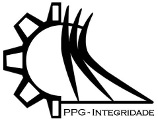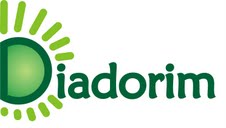Reliability-based optimization planning of aerodromes runway orientation for crosswind
Palavras-chave:
Aerodromes; Air transport; Airport planning; Runway project.Resumo
The Wind Rose is the conventional method applied to define the best runway orientation, which is based
on a frequentist analysis of probability and on a significant data amount. The method presents questionable
precision about results. Hence, this paper aims to provide an alternative method based on the axiomatic definition of
probability, which uses the First Order Reliability Method (FORM) in order to achieve the reliability indexes
associated to the able runway orientations. The proposed method was developed in ForTran language and applied to
a case study in order to its evaluation and exemplification. Results showed that the best orientation was similar for
both conventional and proposed method, however, the calculated probabilities were significantly different. Finally,
this study contributes to the advancement of this probabilistic approach for cases that data cannot be exclusively
described by a bivariate normal distribution and when relevant correlations occur between variables.
Referências
ANG, A.H-.S; TANG, W. Probability Concepts in Engineering Planning and Design. New York: John Wiley and Sons, v.2, 1984.
APPLEQUIST, S. Wind rose bias correction. Journal of Applied Meteorology and Climatology, 51(7), p.1305-1309, 2012.
BELLASIO, R. Analysis of wind data for airport runway design. Journal of Airline and Airport Management, 4(2), p.97-116, 2014.
BENOÎT, C. Note sur une méthode de résolution des équations normales provenant de l’application de la méthode des moindres carrés à un système d’équations linéaires en nombre inférieur à celui des inconnues, (Procédé de Commandant Cholesky). Bulletin of Géodetic Sciences. 2, p.67-77, 1924.
CHANG, S.-W. Crosswind-based optimization of multiple runway orientations. Journal of Advanced Transportation, 49, p.1-9, 2015.
CHANG, S.-W. Orientations optimization for two runway configurations. In.: Proceedings of the Eastern Asia Society for Transportation Studies, 9, p.1-10, 2013.
CORNELL, C.A. First order uncertainty analysis of soils deformations and stability. In.: Proceedings of the 1st International Conference on Application of Statistics and Probability in Soil and Structural Engineering, Hong Kong, China: Hong Kong University Press, p. 129-144, 1971.
FAA. Advisory Circular AC 150/5300-13A. U.S. Department of Transportation, Federal Aviation Administration, 2012.
FALLS, L.W.; BROWN, S.C. Optimum runway orientation relative to crosswinds. NASA Technical Note TND-6930, National Aeronautics and Space Administration, Washington, DC, USA, 1972.
FREUDENTHAL, A. M. The Safety of Structural. Transactions of ASCE. Vol. 112, p. 125-180, 1947.
HASOFER, A.M.; LIND, N.C. Exact and invariant second-moment code format. Journal of Engineering Mechanics, 100(1), p.111-121, 1974.
HU, Z.; DU, X. Reliability methods for bimodal distribution with first order approximation. Journal of Risk and Uncertainty in Engineering Systems, Part B: Mechanical Engineering, 5(1), 011005, 2018.
JIA, X.; CHUNG, D.; HUANG, J.; PETRILLI, M.; THE, L. ARO: Geographic information systems-based system for optimizing airport runway orientation. Journal of Transportation Engineering, 130(5), p.555-559, 2004.
KOLMOGOROV, A. Über die Grenzwertsätze der Wahrscheinlichkeitsrechnung. Bulletin de l'Académie des Sciences de l'URSS. Classe des sciences mathématiques et na, 3, 363”“372, 1933.
LAAT, J.P.; ROLING, P.C. Runway location and orientation suitability analysis. In.: Proceedings of the 14th AIAA Aviation Technology, Integration, and Operation Conference, p.2153-2162, 2014.
LENHARD JR., R.W.; FOARD, J.M. Determining the availability of existing runways. Bulletin American Meteorological Society, 39(5), p.253-257, 1958.
MELCHERS, R.E; BECK, A.T. Structural Reliability Analysis and Prediction. 3ed. New York: Wiley, 2017.
MOUSA, R.M.; MUMAYIZ, S.A. Optimization of runway orientation. Journal of Transportation Engineering, 126(3), p.228-236, 2000.
NATAF, A. Détermination des distribution dont les marges sont donées. Compters rendus de l’Academic de Sciences, 225, 42-43, 1962.
OKTAL, H.; YILDIRIM, N. Method for identifying optimum runway orientation. U.S. Patent Application No. 15/828,343, 2019.
PEARSON, K. On the criterion that a given system of deviations from the probable in the case of a correlated system of variables is such that it can be reasonably supposed to have arisen from random sampling. Philosophical Magazine Series 5, 50(302), 157-175, 1900.
RACKWITZ, R.; FIESSLER, B. Structural reliability under combined load sequences. Computers & Structures, 9, p.489-494, 1978.
SARSAM, S.I.; ATEIA, H.A. Development of a computer program for airport runway location, orientation, and length design in Iraq. In.: Proceedings of the ASCE Transportation and Development Institute Congress, p.291-300, 2011.
TENNENBAUM, J.S. The usability of aerodromes. Aircraft Engineering and Aerospace Technology, 20(7), p.194-199, 1948.
Downloads
Publicado
Edição
Seção
Licença
Copyright (c) 2021 Revista Interdisciplinar de Pesquisa em Engenharia

Este trabalho está licenciado sob uma licença Creative Commons Attribution-NoDerivatives 4.0 International License.
Autores que publicam nesta revista concordam com os seguintes termos:
Autores mantém os direitos autorais e concedem à revista o direito de primeira publicação, sendo o trabalho simultaneamente licenciado sob a Creative Commons Attribution License o que permite o compartilhamento do trabalho com reconhecimento da autoria do trabalho e publicação inicial nesta revista.
Autores têm autorização para assumir contratos adicionais separadamente, para distribuição não-exclusiva da versão do trabalho publicada nesta revista (ex: publicar em repositório institucional ou como capítulo de livro), com reconhecimento de autoria e publicação inicial nesta revista.
Autores têm permissão e são estimulados a publicar e distribuir seu trabalho online (ex: em repositórios institucionais ou na sua página pessoal) a qualquer ponto antes ou durante o processo editorial, já que isso pode gerar alterações produtivas, bem como aumentar o impacto e a citação do trabalho publicado.









